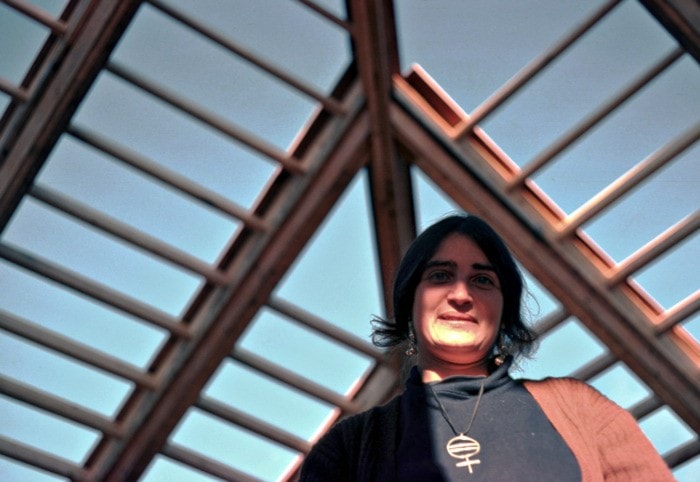For virtually the Vallican Whole’s entire existence — from conception to construction to focal point of community life — Marcia Braundy has been there with her camera.
Now her photographs have been compiled into a show — Building the Building, Building Community, curated by Helen Sebelius — which opens Friday at the Kootenay Gallery in Castlegar, ahead of the Whole’s 40th birthday.
Braundy says she has always been conscious of chronicling its history.
“Absolutely. I’m a documentarian at heart,” she says. “I took close to 900 slides. I felt in its 40th year it was time to do something with them.”
Braundy came to the Slocan Valley in 1970 from California, where she helped start a series of alternative schools — including an elementary, a high school, and Antioch University West in San Francisco.
She co-founded what was originally known as the Slocan Valley Free School, which needed a home. At the same time, she says, not everyone was welcoming of hippies, including some community hall societies.
“We really needed a community centre and a place for the school to hang out as well,” she says. “I got involved in being the person being there every day making it happen.”
The school joined forces with the Rural Alternatives Research and Training Society — the Whole’s parent organization — to help turn the building into reality.
Braundy’s oldest slides date to 1973, although she obtained some even earlier black and white negatives and contact prints from Rob Wood, who with David Orcutt travelled up and down the valley trying to find land for the community centre.
They struck a deal with Michael Kaplan, who was willing to sell them property for $5,000 — to be paid in annual installments of $200 for however long it took. (In 1982, when Kaplan wanted to attend medical school, a benefit raised enough money to pay off the mortgage. Braundy has a picture of herself burning the document.)
Work began in 1971 with the help of a government grant, but stalled once the foundation was in place — leading some to refer to it derisively as the Vallican Hole. It took a few more years to complete what was renamed the Vallican Whole.
The photos show the construction process, including the many women and youths who helped, and the many benefit dances and community gatherings held there.
The slides have been reproduced as prints by Jo Brown of Wallshots in Winlaw, Michael Mayrhofer of Vogue Studio and Derek Bruce of Kokanee Camera in Nelson.
Braundy is also creating a slideshow DVD, which she will narrate.
“I will be telling stories and have interviewed a number of people who worked on the building over the years,” she says. “It’ll be my story, but I’ll use other people to tell their stories too.”
Proceeds from the DVD’s sale will be returned to the Vallican Whole. A short trailer is expected to be included in the Kootenay Gallery show, which has its opening reception tomorrow at 7 p.m. and continues until September 12.
Correcting the Whole timeline
Braundy points out we had some of our dates wrong in Wednesday’s story.
It was 40 years ago this summer that the concrete foundation for the Vallican Whole was laid, mostly by hand, using borrowed cement mixers and wheelbarrows.
The first dance on the land was in the summer of 1972 with jazz banjoist Nappy Lamare playing with Brain Damage and folks dancing in the field, as there was still no floor on the foundation.
“The floor was built in 1974, when many valley folks came together to build the Vallican Whole Community Centre on that incredible foundation,” Braundy says.
Next: A new sculpture park enhances the Whole’s grounds.
